"The cost of high rent is the cheapest form of advertising”
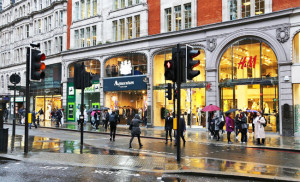
Share of voice in advertising — in a noisy room, are you barking like a big dog or whimpering like a puppy? — ain’t nothing but a way to create share of mind.
And share of mind — when people need what you sell, do they think of you at all, let alone first? — is no-brainer when people see your store / brand all the time.
It’s why retail stores typically pay extortionate rents to be where the people are – downtown, in shopping districts, malls, etc.
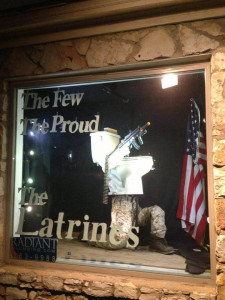
Much easier to pay the high rent and get all that share of mind and foot traffic than to try to make up for it with ad budget.
It even makes sense if you’re in a service business. Seriously.
At this point, you might be wondering if I’m suggesting you go out and change locations.
Nope. Not today, at least. Put it on the someday list.
But you DO want to strongly consider finding a substitute for great location.
Substitutes can take a few different forms, some easier to pull off than others:
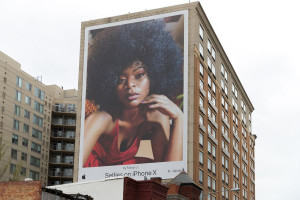
- You could rent out a display window in a heavily trafficked area. One of my former clients did that and not only grew their business, but achieved national fame in the process.
- You could pay to paint a building side or project an image at night onto the building
- You can use billboards. That’s often the most practical option and it’s what the rest of the article is about.
While billboards can be pricey, they’ve actually become a much better value over the last decade, with the price dropping compared to other forms of media, even while their audience has held steady in the face of an increasingly fragmented media landscape.
At one time a single billboard was more expensive than a Television campaign, and that’s just not the case anymore if you’re any good at negotiating billboard prices.
But before you start buying billboards, know this: never — never, ever — buy digital billboards where your ad rotates with other ads.
It takes more time to read a digital billboard than you actually have so people see only a portion of your advertisement. And that means they “register” none of the ad.
Remember how we started this with a discussion of share of mind vs. share of voice?
Digital billboards net you zero share of mind.
On the other hand, strategically placed (static) billboards are one of the most effective forms of advertising you can find.
And a good billboard campaign can stand alone as your sole marketing media, or it can complement radio or TV ads.
So what makes a good billboard campaign good? 3 Things
1 Hard Hitting Billboard Design
The most expensive billboard is the one nobody notices.
Or can’t possibly read in the 7 seconds or so it takes to drive past.
This makes hard hitting billboard design a must.
When it comes to message shorter hits harder.
If you can’t say it in less than 8 words plus an eye catching image, you can’t say it at all on your billboard.
This McDonald’s billboard hits hard in only 7 words. Perfect.
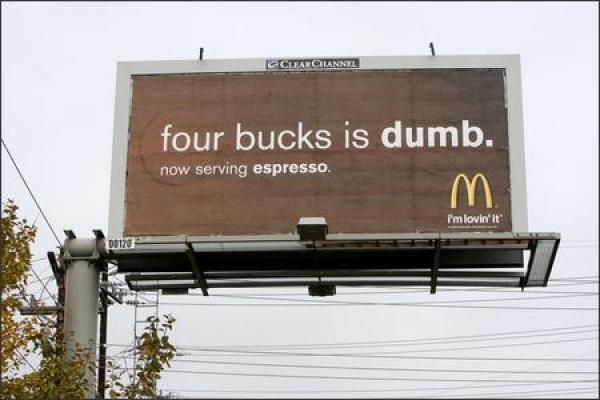
Another aspect of hard hitting billboard design involves breaking the frame — using extensions to stick out from the rectangular billboard frame creates instant eye-catching appeal. Like this billboard below:

Another strong key is viewer involvement. Are you getting people to connect the dots in their minds? Especially in a way that’s fun? McDonald’s does this effortlessly:
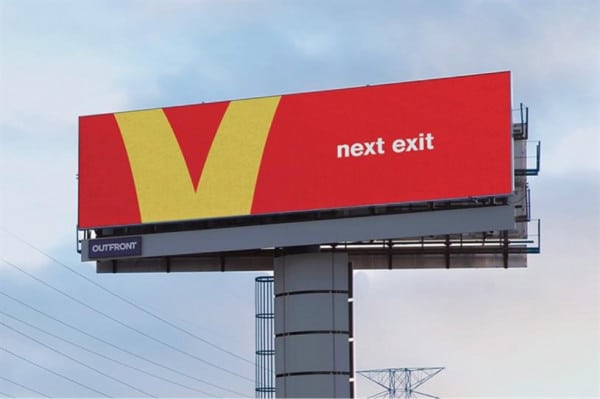
2 New Month, New Ad — Turn-Over
If you don’t change your billboards at least monthly, your ad blends into the background and people tune them out.
You’ve probably noticed this in reverse — someone changes a billboard to a new, eye- catching design, and you wonder how you never noticed there was a billboard there before.
Changing your billboards monthly keeps this from happening, giving you your money’s worth. Because, as I said earlier, the most expensive billboard is the one nobody notices.
3 Thinking in Campaigns Rather than One-Off Ads
Since you’ll be changing your billboards every month, you’ll want to ensure there’s a thematic and design continuity throughout your campaign.
So plan that out ahead of time.
You’ll want viewers to know it’s your billboard before they even finish reading it.
Below are some examples of two famous billboard campaigns, with the Chick-Fil-A examples representing a stand-alone billboard campaign that drove legendary growth for the brand.
Note that both campaign’s feature hard hitting design, with the Chick-Fil-A campaign also featuring 3-D add-ons the poster-sized billboards.
And both campaigns feature billboard designs that are recognizably on-brand from first glance.
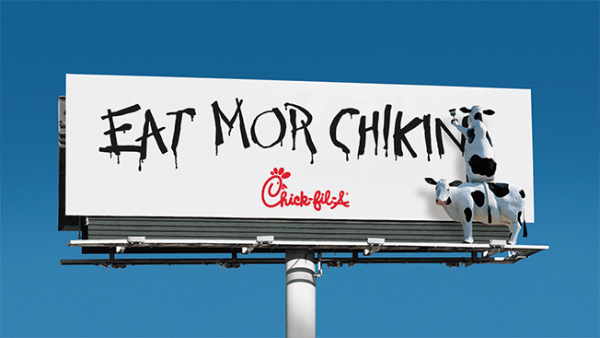
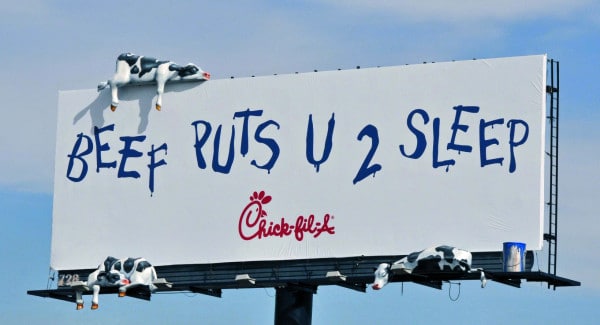
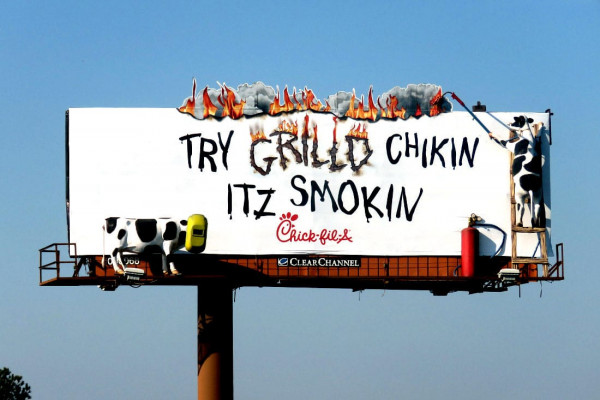
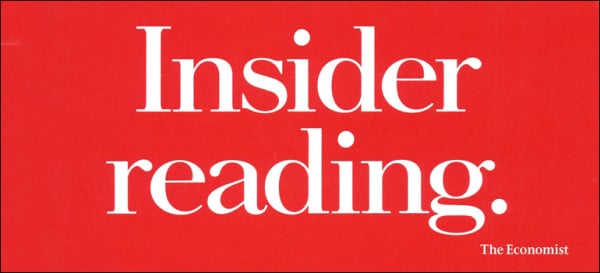
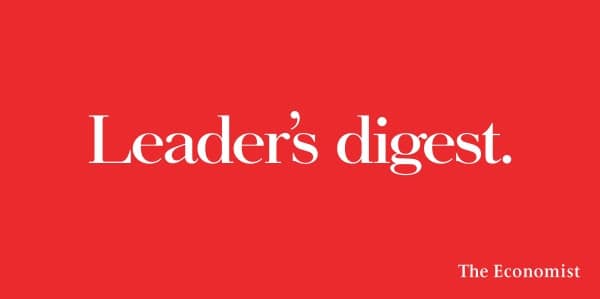
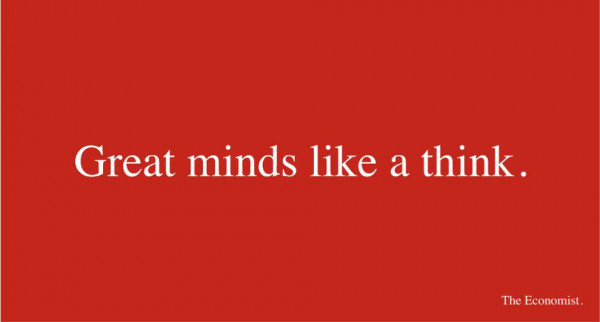
4 Solid Placement & Possible Geo-Targeting
Another fantastic use of billboards is Geo Targeting. Fancy marketing term for placing billboards in areas you know need your service.
For example, if you are a contractor of any sort you have a basic idea of the life span of the product you service. So you know what neighborhoods you should be working in. Placing billboards in areas leading up to or as close to the shopping/playing area of those neighborhoods is geo targeting and a great compliment to any ad campaign, or even as a stand alone.
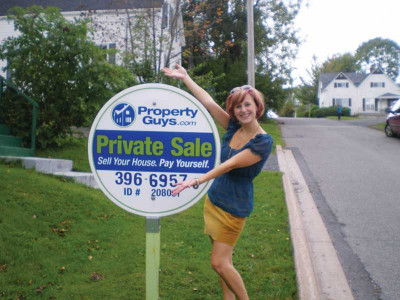
A Few Caveats
As a media buyer and ad strategists, I’m a huge believer in billboards, especially as a (temporary) replacement for great store placement / expensive rent.
That said, I want to be clear that I am in no way suggesting a media mix, in which a company would spread their ad budget out evenly over multiple medias.
This is always a bad idea of a local or regional company.
A media mix only makes sense for huge companies with unlimited ad dollars who easily reach the point of diminishing returns for any one media that they choose. More than likely, that’s pretty far off from describing either your business or your ad budget.
Billboards don’t have to stand alone, but if you’re going to use them compliment another primary media, you better make sure that you’re not better off pushing that added budget into your primary media before looking elsewhere.
And if you choose billboards as your primary media, you’d better invest enough into them to make them work.
And I’m not just talking number of locations or year-long schedules.
I’m talking about investing in design and frequency of change.
We already discussed this back in Point #2, but it bears repeating.
See, people think that they understand until they see the costs involved.
It isn’t generally free to swap messages monthly but it is necessary unless you’re a fan of wasting money.
It’s imperative to keep up with this if you want a successful campaign.
And while add-ons, either 3-D or not, look really cool and get clients excited, the added expense can kind of harsh the mellow and kill the buzz.
But relevant and moving content is an absolute must. So if you’re going to skimp somewhere DON’T skim on that.
I’d much rather have one or two fewer locations than a bunch of mediocre billboards that nobody notices anyway.
Or billboard designs that stay up too long and become invisible for half the time they’re up.
Finally, I mentioned that billboard prices have gone down, especially relative to other media.
And that’s true. But how much a billboard costs is going to vary by the size of market and the industry your business is in.
Plus it’s going to depend mightily on who you’ve got negotiating the prices, and especially on whether they have the experience and knowledge necessary to get the right deal for you.
If you think billboards might be the right tool for your marketing, and you’d like an expert to negotiate for you and provide consultation on your designs and overall campaign, give me a shout.
- Bonding Not Branding - May 1, 2020
- The 7 Most Common Media Buying Mistakes - February 19, 2020
- Billboards, Outdoor, and Ambient Advertising - January 23, 2020
